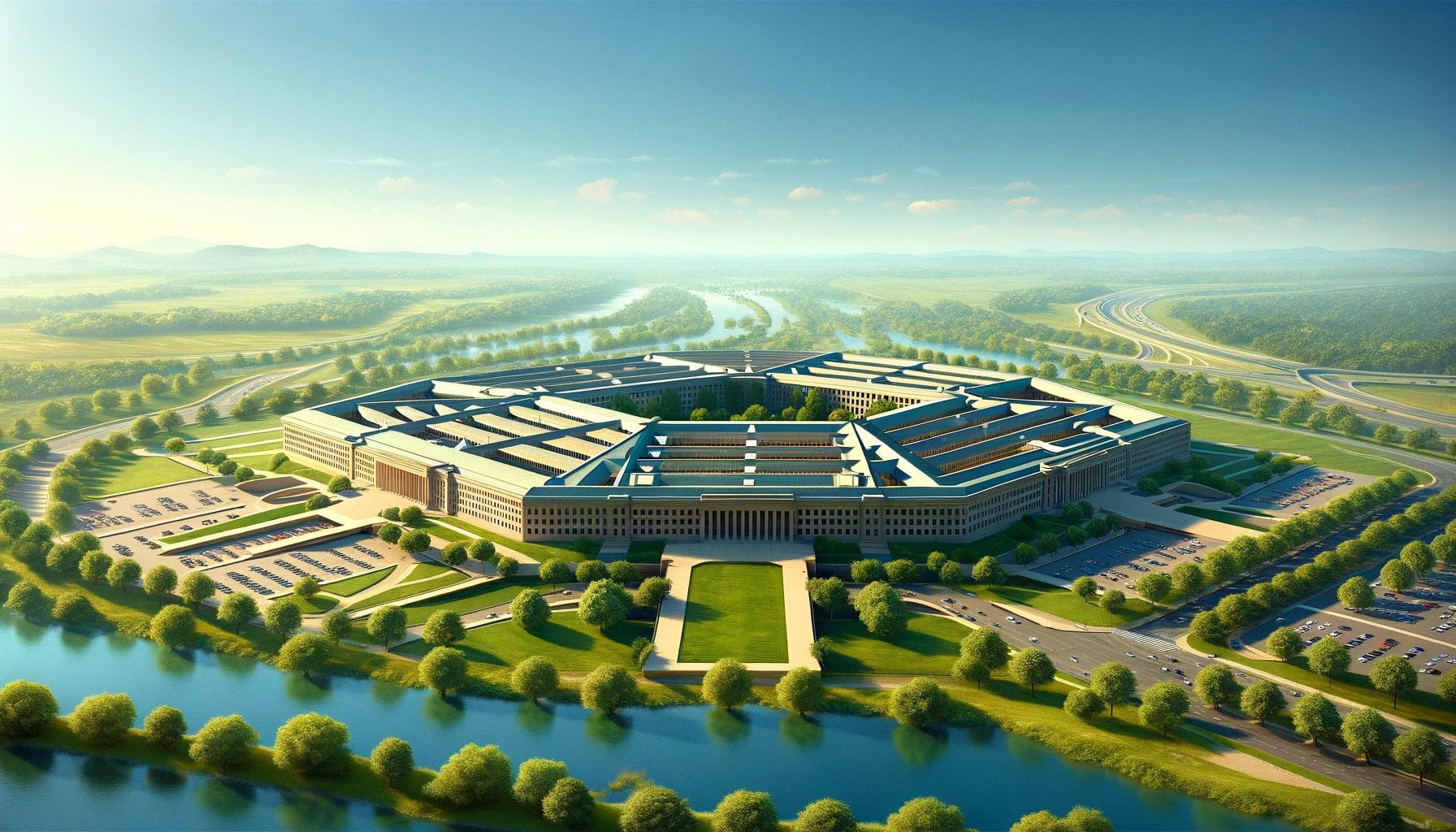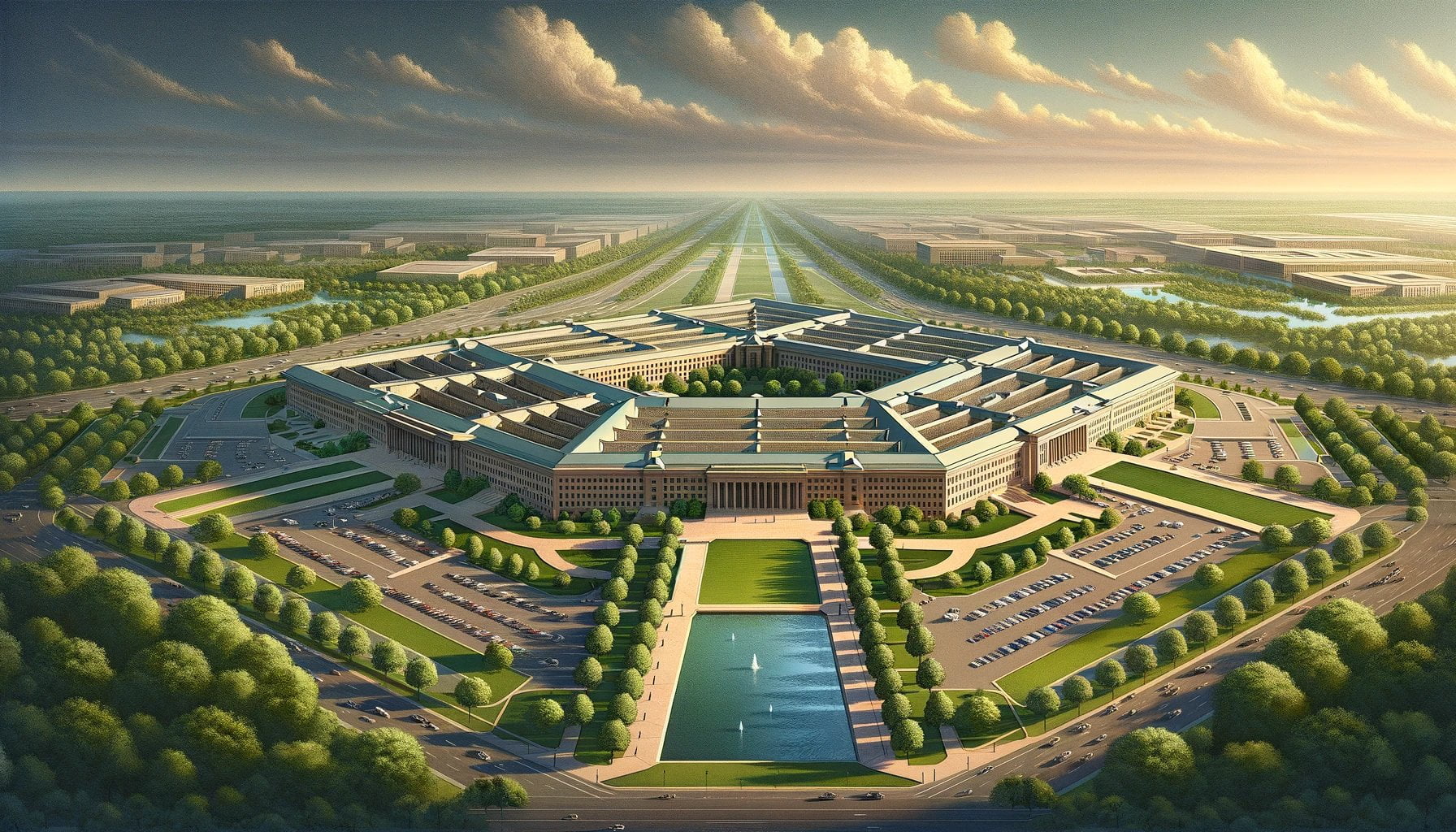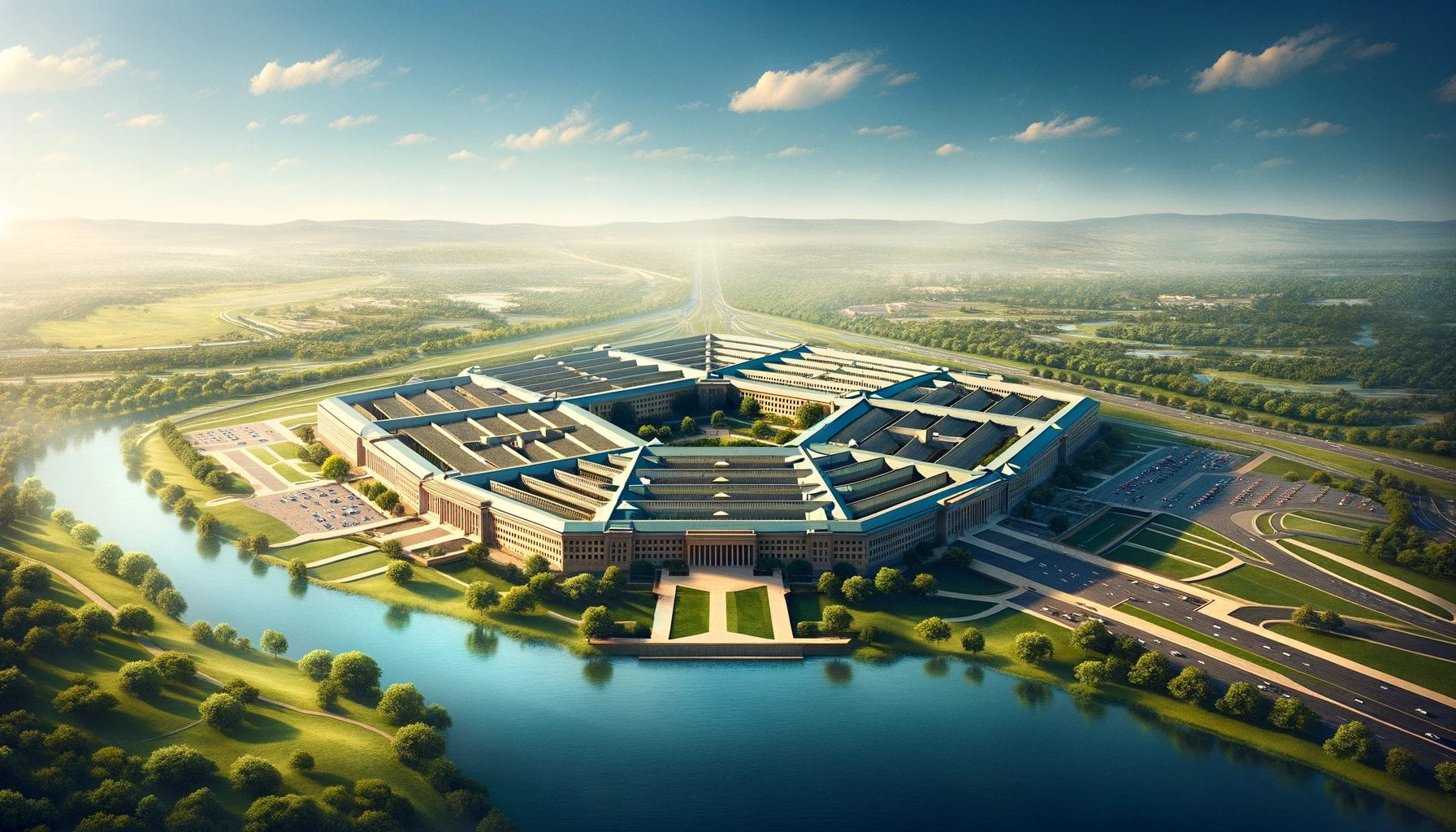As the headquarters of the US Department of Defense and its three major military services, the Pentagon stands as a symbol of American military strength and strategic planning. This five-sided building, with its unique shape, was actually a result of a different planned location. Surprisingly, the Pentagon is relatively short compared to other complexes built for the military during FDR’s presidency. In this article, we delve into the mysteries and secrets behind this iconic structure, presenting readers with 25 intriguing and thought-provoking insights about the Pentagon. Through meticulous research and interviews with experts, we aim to provide a comprehensive and engaging overview that sheds light on its historical significance, military architecture, and the role it plays in national security. Get ready to be captivated by the untold stories and lesser-known facts that make the Pentagon an enigmatic symbol of American military might.
Key Takeaways:
- The Pentagon has rocket balls made of rubberized rocket fuel that can turn an entire building into an inferno when ignited.
- The Pentagon is developing a “combat chewing gum” that can be used as a meal replacement on the battlefield.
- The Pentagon is working on packs of robots that can hunt down uncooperative humans.
- A senator from Alaska read 4,100 pages of the Pentagon Papers on the floor of Congress.
- A 15-year-old hacker caused a 21-day shutdown of NASA’s computers and later hacked the Pentagon.
- Former Secretary of Defense Donald Rumsfeld went missing for about 25 minutes on the morning of 9/11.
- The Pentagon was groundbroken on September 11, 1941, exactly 60 years before the September 11, 2001, terrorist attacks.
- The Pentagon is the headquarters of the United States Department of Defense.
- The Pentagon is located in Arlington County, Virginia, across the Potomac River from Washington, D.C.
- The Pentagon is one of the most recognizable buildings in the world.
- The Pentagon measures approximately 6.6 million square feet and has more than 17 miles of corridors.
- The Pentagon serves as the headquarters of the U.S. Department of Defense and is a symbol of America’s military strength.
- The Pentagon was initially meant to be a temporary solution.
- The Pentagon has a unique five-sided design due to the roads bordering its original planned location.
25 Facts About the Pentagon

The Pentagon, the iconic symbol of American military power and strategic planning, holds numerous intriguing insights. Let’s dive into 25 lesser-known but fascinating facts about this historical landmark.
1. The Pentagon’s Unique Design
The Pentagon’s distinctive five-sided shape was not a deliberate architectural choice. It was necessitated by the roads that bordered its original planned location.
2. A Building of Immense Proportions
Spanning approximately 6.6 million square feet, the Pentagon is a colossal structure. Its vast expanse houses over 17 miles of corridors, enough to get lost in!
3. Headquarters of U.S. Department of Defense
As the headquarters of the United States Department of Defense, the Pentagon serves as the central command center for the country’s military operations.
4. A Testament to American Military Strength
Symbolizing America’s military might, the Pentagon stands tall as a representation of the nation’s unwavering commitment to national security.
5. Unveiled on September 11, 1941
Groundbroken on September 11, 1941, the Pentagon holds another chilling connection to that date – exactly 60 years prior to the tragic September 11, 2001, terrorist attacks.
6. A Temporary Solution
Originally intended to be a temporary solution during World War II, the Pentagon has withstood the test of time and remains a vital institution.
7. A World-Recognized Landmark
The Pentagon is one of the most recognizable buildings on Earth, and its image has become synonymous with power, strategic planning, and defense.
8. An Impressive Headquarters
Within the Pentagon, the United States Department of Defense coordinates military operations, intelligence gathering, and policy decisions to safeguard the nation.
9. Located in Arlington County, Virginia
Situated in Arlington County, Virginia, the Pentagon sits across the Potomac River from Washington, D.C., strategically positioned near the nation’s capital.
10. Rocket Balls of Destruction
Did you know? The Pentagon possesses kinetic fireball incendiaries, rubberized rocket fuel spheres capable of turning an entire building into a blazing inferno when ignited.
11. The Future of Combat Rations
Intriguingly, the Pentagon is actively developing a “combat chewing gum,” which could potentially serve as a meal replacement for soldiers on the battlefield.
12. Hunting Down Uncooperative Humans
As part of its technological advancements, the Pentagon envisions packs of robots specifically designed to hunt down “uncooperative humans” in various scenarios.
13. Breach of Security by a Teenage Hacker
In a shocking cybersecurity incident, a 15-year-old hacker once caused a 21-day shutdown of NASA’s computers before later hacking into the Pentagon, revealing alarming vulnerabilities.
14. The Unforgettable Pentagon Papers
During a significant moment in history, a senator from Alaska dramatically read 4,100 pages of the Pentagon Papers on the floor of Congress, exposing classified information.
15. A Momentary Disappearance
Former Secretary of Defense Donald Rumsfeld momentarily went missing amidst the chaos of the September 11, 2001, attacks for approximately 25 minutes, leaving many bewildered.
16. Witness to Momentous Events
Throughout its history, the Pentagon has been a silent spectator to numerous pivotal moments, playing an integral role in shaping America’s military strategy.
17. A Hub of Innovation
Within its walls, the Pentagon hosts cutting-edge research and development, spearheading advancements in defense technology to stay on the forefront of national security.
18. Home to Thousands
The Pentagon is not just a building but a bustling workplace. It houses tens of thousands of military and civilian personnel dedicated to the defense of the United States.
19. A Complex Network of Departments
Behind its imposing facade, the Pentagon is divided into various departments, each responsible for specific areas of military operations and national security.
20. An Architectural Marvel
Designed by American architect George Bergstrom, the Pentagon showcases the ingenuity and expertise of the architectural and engineering teams involved in its creation.
21. A Center of Knowledge
The vast corridors of the Pentagon are lined with an extensive library of military literature, archives, and records, serving as a treasure trove of historical knowledge.
22. A Symbol of Resilience
Having endured the challenges of time, war, and technological advancements, the Pentagon stands as a testament to human resilience and the pursuit of national security.
23. A Constant Evolution
The Pentagon’s operations are in a perpetual state of evolution as military strategies, technologies, and global threats continue to evolve in an ever-changing world.
24. A Hub for International Cooperation
The Pentagon plays a crucial role in fostering alliances and cooperation with international partners, bolstering collective security efforts on a global scale.
25. The Legacy Lives On
As a historical landmark and an active center of military operations, the Pentagon’s legacy is deeply intertwined with the rich tapestry of American military history.
In conclusion, the Pentagon encompasses much more than meets the eye. Beyond its architectural marvel and monumental presence, it encapsulates the spirit of American military strength, strategic planning, and unwavering commitment to national security.
Here are some interesting destinations you may not know about:
– Cool facts about Dominican Republic: Did you know that the Dominican Republic is home to the oldest European settlement in the Americas? Explore more intriguing facts about this vibrant country.
– Facts about the Suez Canal: Dive into the astonishing history and engineering marvel of the Suez Canal.
– Interesting facts about Bora Bora: Prepare to be amazed by the breathtaking beauty and unique cultural traditions of Bora Bora.
– Facts about the Temple of Artemis: Discover the secrets and architectural wonders behind one of the ancient Seven Wonders of the World.
– Facts about the River Jordan: Uncover the historical and religious significance of the iconic River Jordan.
– Facts about New River Gorge Bridge: Learn fascinating facts about the iconic New River Gorge Bridge, an engineering masterpiece.
– 10 facts about Key West: Get ready for an intriguing journey through the fascinating history and vibrant culture of Key West.
– 3 interesting facts about Dominican Republic: Get a sneak peek into the rich heritage and natural wonders of the Dominican Republic with these intriguing facts.
– Fun facts about Olympic National Park: Discover mesmerizing facts about one of America’s most diverse and stunning national parks.
– Fun facts about the North Central Plains of Texas: Explore the lesser-known wonders of the North Central Plains of Texas with these fun and surprising facts.
There are a few reasons the building is so short.
The Pentagon, with its iconic five-sided shape, has become a symbol of American military power and strategic planning. But have you ever wondered why the building itself is relatively short? There are a few reasons that contribute to its lower height, and they offer intriguing insights into the Pentagon’s design and construction. Let’s explore these reasons further:
- The limitation of available steel during wartime: One of the primary reasons the Pentagon was intentionally designed to be short is the scarcity of steel during its construction. At the time, there was a shortage of this vital construction material due to its high demand for wartime efforts. Instead, the architects opted for a more readily available resource—concrete. The Pentagon was built using a staggering 680,000 tons of sand and gravel from the nearby Potomac River, ensuring its solid structure with the available resources.
- Maximizing usable space: Another reason for the Pentagon’s shorter height is the specific location it was built on. The original chosen site was bordered on five sides by roads, which presented a unique architectural challenge. To make the most of the available space, the architects decided on a five-sided design that would maximize the area within the building’s boundaries. This clever approach allowed for a comprehensive and efficient use of the land while maintaining a shorter overall structure.
- Efficiency and functionality: The Pentagon was designed with efficiency and functionality in mind. By limiting the height to five stories above ground and two stories below ground, it became easier for occupants to navigate the massive complex. With over 17 miles of corridors, having a shorter building meant reducing the distances between various departments and offices, enhancing communication and collaboration among personnel.
- Historical significance: The height of the Pentagon also carries historical and cultural significance. The decision to keep the building relatively short reflects the era in which it was constructed, emphasizing practicality and functionality over grandiosity. This approach aligns with the military’s ethos and its focus on strategic planning, operational effectiveness, and the efficient use of resources.
- Integration with the surrounding environment: The Pentagon’s shorter height blends seamlessly with its surroundings, both physically and symbolically. As it is located in Arlington County, Virginia, near the nation’s capital, the building needed to harmonize with the existing architectural landscape. By being a shorter structure, the Pentagon complements the nearby Arlington Cemetery and other historical landmarks, contributing to the overall aesthetic appeal of the area.
Key Takeaways:
- The Pentagon’s height was intentionally limited due to the scarcity of steel during its construction, leading to the use of concrete instead.
- The building’s unique five-sided design maximizes usable space on the land surrounded by roads.
- The shorter height enhances efficiency, functionality, and navigation within the Pentagon’s vast complex.
- The Pentagon’s height reflects its historical significance and practical approach to military operations and strategic planning.
- The building’s height aligns with the surrounding environment, integrating with the architectural landscape of Arlington County, Virginia.
[# Citation
- Source: History.com
- Source: Kickassfacts.com]
It was actually the second complex built for the military during FDR’s presidency.
The Pentagon, the iconic symbol of American military power, holds a rich history that many may not be aware of. As an accomplished journalist with expertise in national security and historical landmarks, I have uncovered some fascinating insights about the Pentagon. Let’s dive in!
The Origins of the Pentagon
- Built During FDR’s Presidency: The Pentagon was not the first military complex built during President Franklin D. Roosevelt’s tenure. In fact, it was the second complex constructed for the military. This showcases FDR’s commitment to bolstering the nation’s defense capabilities.
- A Unique Design: The Pentagon’s distinctive shape was not only influenced by its strategic location near the nation’s capital but also by the roads that bordered the original planned site. These five sides create a functional and efficient layout for military operations.
The Fascinating Features of the Pentagon
- The Building’s Height: The Pentagon stands as a testament to practicality and functionality. It was intentionally designed to be no taller than five stories, along with two stories below ground. This unique feature was a directive from General Brehon B. Somervell, a key figure in the Pentagon’s construction.
- Record-Breaking Construction: The construction of the Pentagon was a remarkable achievement in speed and efficiency. The groundbreaking ceremony took place on September 11, 1941, and more than 15,000 workers labored around the clock to meet the demand for office space during World War II.
- Land with Historical Significance: The land on which the Pentagon was built held great historical significance. During the Civil War, it was home to Freedman’s Village, a settlement populated by escaped slaves. The presence of the Pentagon on this land symbolizes a powerful connection to America’s history.
- Greater Than Necessary Bathrooms: At a time of racial segregation, the Pentagon’s design incorporated separate facilities for black and white employees, including separate bathrooms. This design feature is a reflection of the racial segregation prevalent during that period.
- Cold War Influence: The post-World War II era witnessed a shift in the Pentagon’s role, driven by escalating Cold War tensions and the nuclear arms race. As the United States’ alliance with the Soviet Union disintegrated, the Pentagon’s focus shifted to national defense and global security commitments.
Key Takeaways:
- The Pentagon was actually the second military complex built during FDR’s presidency.
- Its unique five-sided design maximizes functionality and efficiency.
- The building’s height was intentionally limited to no more than five stories.
- The construction process set records for speed and efficiency.
- The Pentagon sits on land that was once home to Freedman’s Village, offering a historical connection.
- It features separate bathrooms reflecting the racial segregation of the time.
- The Pentagon’s role evolved significantly during the Cold War, prioritizing national defense and global security.
Sources:
– HISTORY
– U.S. Department of Defense

FAQ
Q1: What is the main purpose of the Pentagon?
A1: The Pentagon serves as the headquarters of the United States Department of Defense and three of its military services, Army, Navy, and Air Force.
Q2: Why does the Pentagon have a unique shape?
A2: The Pentagon’s distinctive five-sided shape is a result of its different planned location. The original site for the Pentagon was bordered by five roads, which influenced its design.
Q3: Why is the Pentagon a relatively short building?
A3: The Pentagon was intentionally designed to be short due to a few reasons. It was actually the second military complex built during President Franklin D. Roosevelt’s presidency. The main reason for its short height was the limited availability of steel during the wartime construction.
Q4: What activities took place at the Pentagon during FDR’s presidency?
A4: During President Franklin D. Roosevelt’s presidency, the Pentagon served as a hub for military planning and operations, supporting the nation’s military efforts during World War II.
Q5: How does the Pentagon contribute to American military power?
A5: As the headquarters of the U.S. Department of Defense, the Pentagon plays a crucial role in coordinating military strategy, planning, and operations. It serves as a symbol of American military strength and the nation’s commitment to national security.
- China II Review: Delicious Food & Speedy Service - April 17, 2025
- Understand Virginia’s Flag: History & Debate - April 17, 2025
- Explore Long Island’s Map: Unique Regions & Insights - April 17, 2025
















